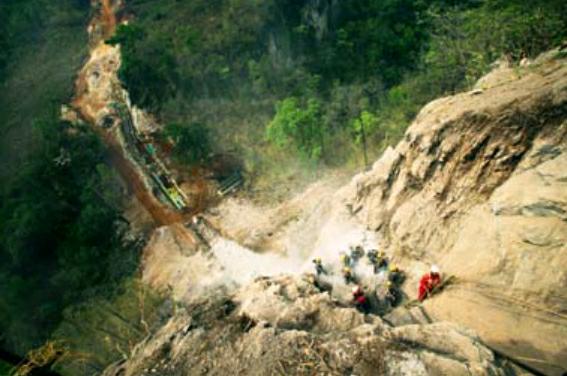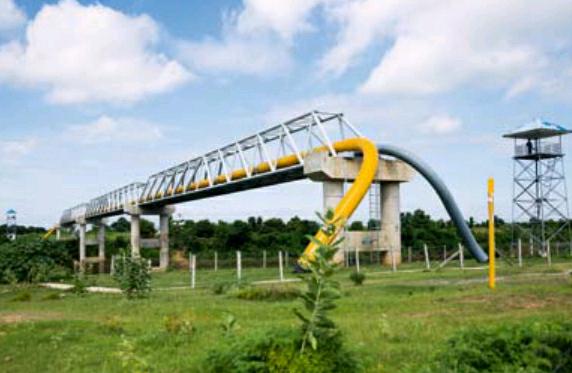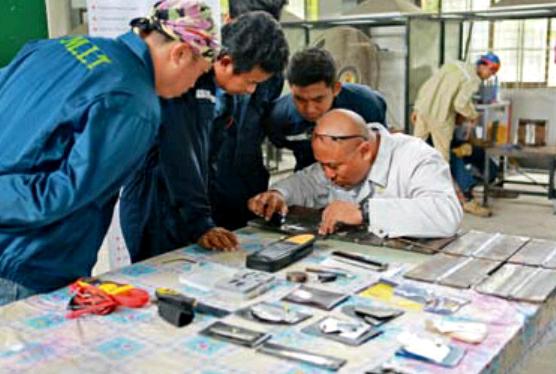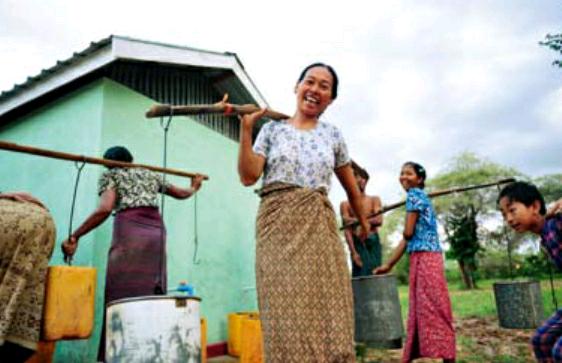China-Myanmar Oil and Gas Pipelines:Widespread Benefits and Multilateral Wins
by+Ru+Yuan
On April 10, 2017, two giant loading arms dropped to connect to the oil transport pipelines of a huge tanker, which soon began unloading crude oil at Maday Island oil port off the western coast of Myanmar. The event marked the beginning of formal operation of the ChinaMyanmar crude oil pipeline project. This project and the China-Myanmar natural gas pipeline, which went into operation in 2013, are together known as the China-Myanmar oil and gas pipelines.
Considered Chinas fourth energy import conduit following the ChinaCentral Asia oil and gas pipelines, the China-Russia crude oil pipeline, and the maritime passageway transporting oil and natural gas, the China-Myanmar oil and gas pipelines project is a landmark effort resulting in mutual benefits and win-win results under the Belt and Road Initiative. U Nyan Tun, former vice president of Myanmar, said that the China-Myanmar oil and gas pipelines project would not only benefit every participant, but also enhance the development of Myanmars economy, industrialization and energy sector, playing a significant role in improving the countrys long-term development prospects.
Most Difficult Project
Both China-Myanmar pipelines start in Myanmars Kyaukpyu Special Economic Zone. In June 2010, the China National Petroleum Corporation (CNPC) and Myan- mar Oil and Gas Enterprise signed a series of agreements. According to them, China would build and manage two pipelines in Myanmar, one for natural gas and the other for crude oil, and hold a 30-year lease.
The designed transmission capacity of the crude oil pipeline is about 22 million tons per year, and that of the natural gas pipeline is 12 billion cubic meters per year. According to the agreements, Myanmar will receive two million tons of crude oil and 20 percent of the natural gas transmitted through the line every year. The pipelines will run through four states in Myanmar before entering China through Ruili City in Yunnan Province, where the pipelines connect to Chinas domestic oil and gas network. After specifications of the project had been agreed upon, the Southeast Asia Pipeline Co., Ltd., established in 2009 as a subsidiary of CNPC, took charge of the projects field investigations, design, construction and management in Myanmar.
Given that the two pipelines traverse a vast area with complicated landforms, the project was deemed the most difficult ever by many engineers.
As the starting point of the crude oil pipeline, Maday is an island off the coast of Kyaukpyu in Myanmars Arakan State. When the construction started in October 2009, the 12-square-kilometer island was an isolated and primitive landform.
Without freshwater or a reliable power supply, everything necessary to build on the island, including the most basic building materials such as reinforced bars and cement, had to be imported. “The natural conditions on the island were adverse,”comments a staffer from the Maday office of the Southeast Asia Pipeline Co., Ltd.“During the dry season, the temperature often hovers above 40 degrees Celsius. And the rainy season lasts from May to November. We were even on the lookout for poisonous snakes while we worked.”Facing such a hostile environment, the company transformed the primitive island into a world-class international oil port in only a few years. Facilities include crude oil tanks with capacity totaling 1.2 million cubic meters, a pumping station for the oil pipeline, valve chests, a workboat wharf, a 650,000-cubic-meter reservoir, a 38-kilometer sea line, and an oil terminal capable of receiving 300,000-ton vessels.
Along with spectacular construction highlights, the project attracted enormous attention due to its unique operational mechanism. Although the pipelines only run through China and Myanmar geographically, the project became a highlyinternationalized commercial program. While the crude oil pipeline was constructed by large enterprises from China and Myanmar, the natural gas pipeline was funded by six companies from four countries including China, Myanmar, South Korea and India.
In July 2013, the natural gas pipeline formally began transporting natural gas to China. In September of that year, it started to transmit natural gas to Myanmar. By the end of March 2017, the pipeline had transported more than 13.3 billion cubic meters of gas to China and supplied Myanmar with 1.55 billion cubic meters. The crude oil pipeline began testing in January 2015 and successfully welcomed the first ship carrying oil from the Middle East that month.
Highly Localized
At 6:00 p.m., street lamps in Kyaukpyu light up the sky. In a country like Myanmar that has long suffered from power shortages, such scenes were once scarce. Kyaukpyus brightness should be credited to the China-Myanmar oil and gas pipelines. Since the natural gas pipeline formally started providing natural gas to Kyaukpyu power plants, the power supply in this region has been strong and steady. According to Jiang Changliang, general manager of the Southeast Asia Pipeline Co., Ltd., all four gas distribution stations in Myanmar constructed for the ChinaMyanmar natural gas pipeline project had begun operation by the end of April 2015. The four stations guarantee the energy supply for the Kyaukpyu Special Economic Zone and Myanmars central industrial area, greatly improving the power supply for local residents.

Since the inception of the oil and gas pipelines project, the Southeast Asia Pipeline Co., Ltd. has been attaching great importance to improving the standards of living for locals. “We visited the villages along the pipelines through Myanmar four times, dropping in on nearly 100 villages to hear locals needs and suggestions,” says Jiang. Through a variety of platforms, the company has injected a total of US$24 million in Myanmar to enhance infrastructure along the pipelines including education, medical services, water and power supplies, telecommunications, and road construction. These projects have benefited more than a million locals.
Besides improving locals livelihoods, the oil and gas pipelines project spared no efforts to promote local employment. At present, the project employs more than 800 Myanmar nationals, who account for 72 percent of its total staff. “During peak construction of the pipelines, we were employing more than 6,000 locals,” stresses Jiang. “And in the future, we will continue to recruit more local employees and train them for the international market.” The company has long realized the importance of local professionals to the projects success. Thus, special job training programs were designed for Myanmar employees, which unleashed impressive industrial talent. During the pipelinesconstruction, the company sent nearly 60 Myanmar university students to Yangon and cities in China to learn both theoretical knowledge and practical skills. These students later returned to Myanmar and joined the company to work at its frontline posts. The company also adopted Chinas traditional staff training mode: Working with senior experienced Chinese employees, newer Myanmar employees have achieved rapid progress.
Multi-Win Cooperation Model
Upon completion, the China-Myanmar oil and gas pipelines will ease the energy supply plight of neighboring countries as well. And Myanmars natural gas supply now has a relatively stable market. In terms of regional cooperation, the China-Myanmar oil and gas pipelines will position Chinas energy demand even closer to the needs of South and Southeast Asian nations, which will facilitate common regional development.
For China, the China-Myanmar oil and gas pipelines serve as a driver of energy structure transformation in southwestern China. Residents in the region, as well as the neighboring Guangxi Zhuang Autonomous Region, will increase their usage of the more environmentally-friendly natural gas in their everyday lives. And after the large-scale increase in global energy supply, the international price for natural gas will be more stable.
For Myanmar, the China-Myanmar oil and gas pipelines, which inject greater demand into local markets with maintenance needs alone and give local enterprises big advantages over international competitors, will directly result in massive economic gains every year. As an investor, Myanmar will also enjoy lucrative dividends for the next 30 years. The project will boost economic development along the pipelines, stimulate Myanmars overall economy and bring tangible benefits to locals.
China Pictorial2017年5期
